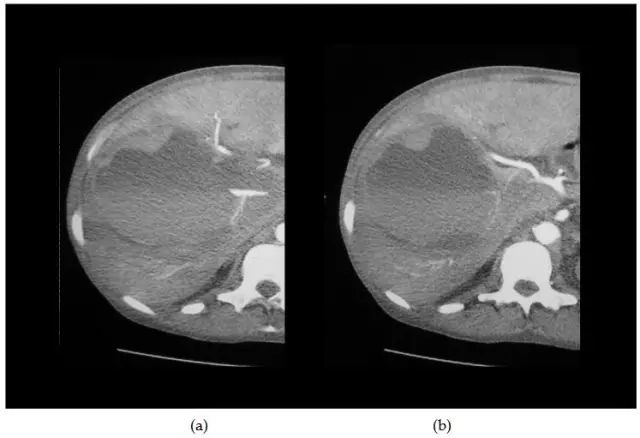- Author Rachel Wainwright [email protected].
- Public 2023-12-15 07:39.
- Last modified 2025-11-02 20:14.
Powerlifting
Powerlifting is a power sport, the task of which is to overcome the weight of maximum resistance. Unlike bodybuilding, the main goal of powerlifting is not aesthetic beauty of the body, but the development of physical strength.

The concept of powerlifting comes from two English words - "power" (strength) and "lift" (to lift). This sport is otherwise called powerlifting: this is due to the fact that it includes three main exercises as competitive disciplines:
- Squats with a barbell located on the top of the shoulder blades;
- Bench press lying on a bench;
- Rod rod.
These exercises are basic and are recommended for novice athletes to develop strength and gain muscle mass.
The combined powerlifting performance of the three disciplines during competition determines the athlete's qualifications. The indicators are assessed by the total weight in all three exercises. In case of identical results, the winner will be awarded to the athlete with the lower weight. If there is a need to compare athletes with different weight categories, the Glossbrenner and Wilks formulas are applied.
Powerlifting, as a sport, is not included in the Olympic Games, but it is part of the World Games sponsored by the International Olympic Committee.
Classic powerlifting
Powerlifting is called classic powerlifting (bench press, deadlift and squat), in which a minimum set of equipment is used. Initially, powerlifting equipment appeared to protect the athlete from injury, but in recent years, manufacturers have improved their products, providing, due to the stiffness of the fabric and other "tricks", an increase of 5 to 15 kg of weight in each movement. So, Ryan Kennelly was able to squeeze 487.6 kg in equipment, and without equipment - only 294.8 kg. Similar results in powerlifting have caused the sport's standards to skyrocket over the past 10 years.
At the moment, the following equipment is used in powerlifting:
- Protective bandages for knees and wrists;
- Squat jumpsuit;
- Bench press shirt;
- Deadlift overalls and some others.
Initially, the International Powerlifting Federation held competitions only in equipment powerlifting, however, in recent years, equipment-less or classic powerlifting has won the recognition of athletes, despite the fact that the standards for this type of sport are still under development.
Powerlifting training
As mentioned above, this sport involves performing three main exercises:
- Squats with a barbell on the back. Starting position - the bar is on the trapezius muscles of the back, feet shoulder-width apart, the weight of the bar is evenly distributed on both limbs. We take a deep breath and, holding our breath, smoothly go down. In this case, the knees bend, and the buttocks "go" down and back. As soon as the thighs become parallel to the floor, it is necessary to tighten the muscles and return to the starting position;
- Bench press. Starting position - the bar is held on arms outstretched above the chest. Then the bar is lowered to the chest, squeezed out of this position onto outstretched arms. After completing the exercise, the bar returns to the stops;
- Rod rod. Starting position - the torso is tilted forward, slightly bent at the lower back. The bar is in front of the shins. We take a breath, hold our breath and pull the barbell to the stomach. In this case, the elbows move up and strictly back. You should strive to raise your elbows as high as possible. Pulling the shell to the belt, exhale and gently lower it to the floor.
Based on many years of experience, experts recommend:
- divide powerlifting workouts into benching, squatting and pulling (this method leaves the athlete the strength to perform auxiliary exercises);
- vary the intensity of the load, dividing workouts into light, medium and heavy. The intensity of the load is understood as the number of lifts of the bar, referred to its average weight (in percent).
The assistance exercises mentioned above have a certain value: they are used to increase the level of the athlete's general fitness. They also contribute to the formation of such qualities of a powerlifter as strength, endurance, speed, flexibility, as well as the development of certain groups of body muscles, influencing the results obtained in powerlifting at competitions. These include training with weights, a barbell, dumbbells, simulators, shock absorbers, gymnastic and acrobatic exercises.
Powerlifting equipment
The following devices are used for powerlifting training:
- Barbell;
- A set of pancakes (it is recommended to use non-rubberized pancakes with a smaller thickness);
- Racks for squats and bench press;
- Deadlift platform.

Contraindications to powerlifting classes
There are a number of diseases for which it is not recommended to exercise with weights. These include:
- Hemorrhoids. You can start training only after complete recovery;
- Hernia. The disease can only be treated with surgery;
- Increased intracranial pressure (increased training can lead to loss of vision);
- Oncological diseases.
With the following diseases, you can do powerlifting, but with some caution and only after consulting a specialist:
- Diseases of the cardiovascular system;
- Osteochondrosis;
- Scoliosis;
- Prostatitis.
Moderate powerlifting training can improve the general condition of the body, strengthen immunity and help heal many diseases of a different nature. For example, exercise in this sport is a lifeline for treating chronic lung diseases (they allow you to get rid of excess fluid and increase lung capacity).
The main rule that must be adhered to when doing powerlifting is to strictly follow the recommendations of the trainer and the attending physician.
Found a mistake in the text? Select it and press Ctrl + Enter.






